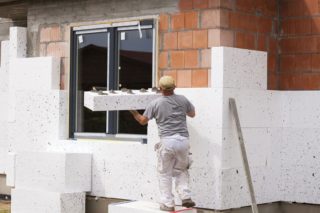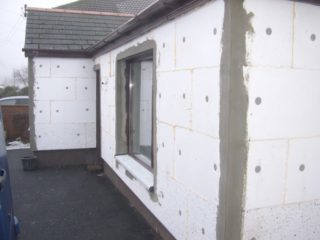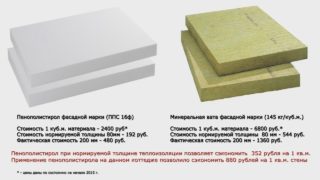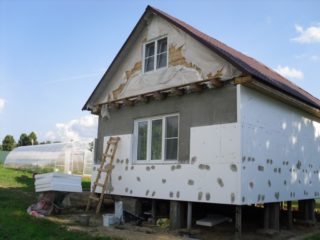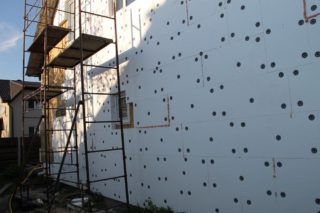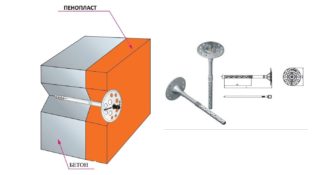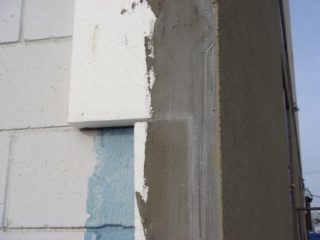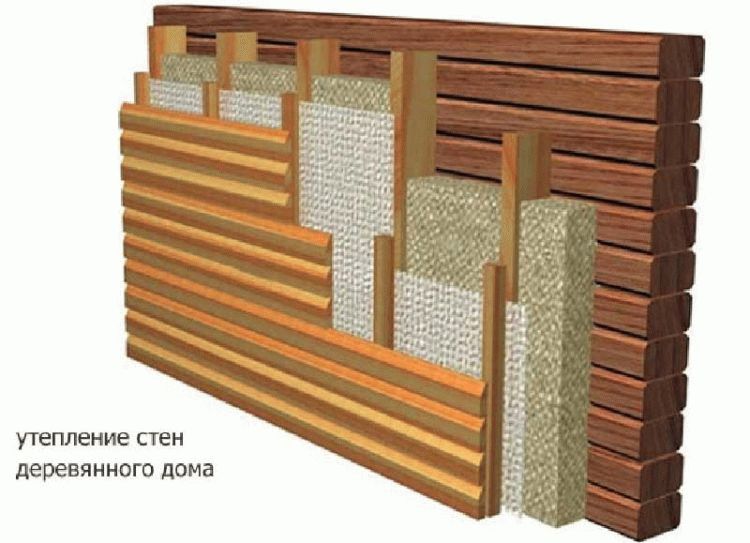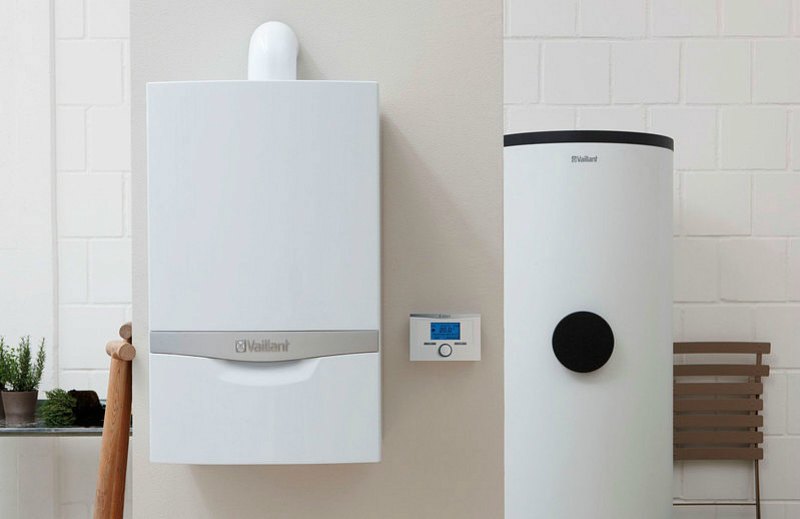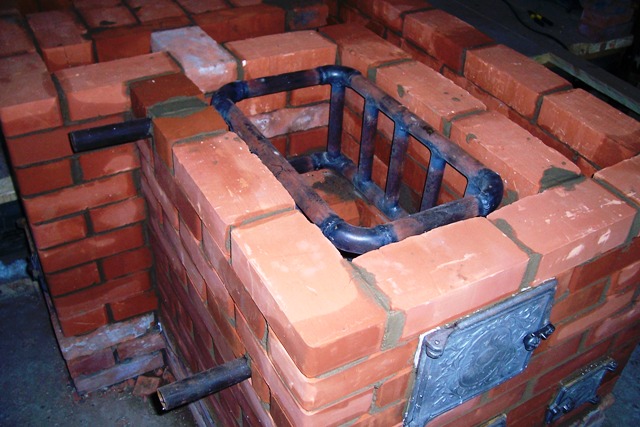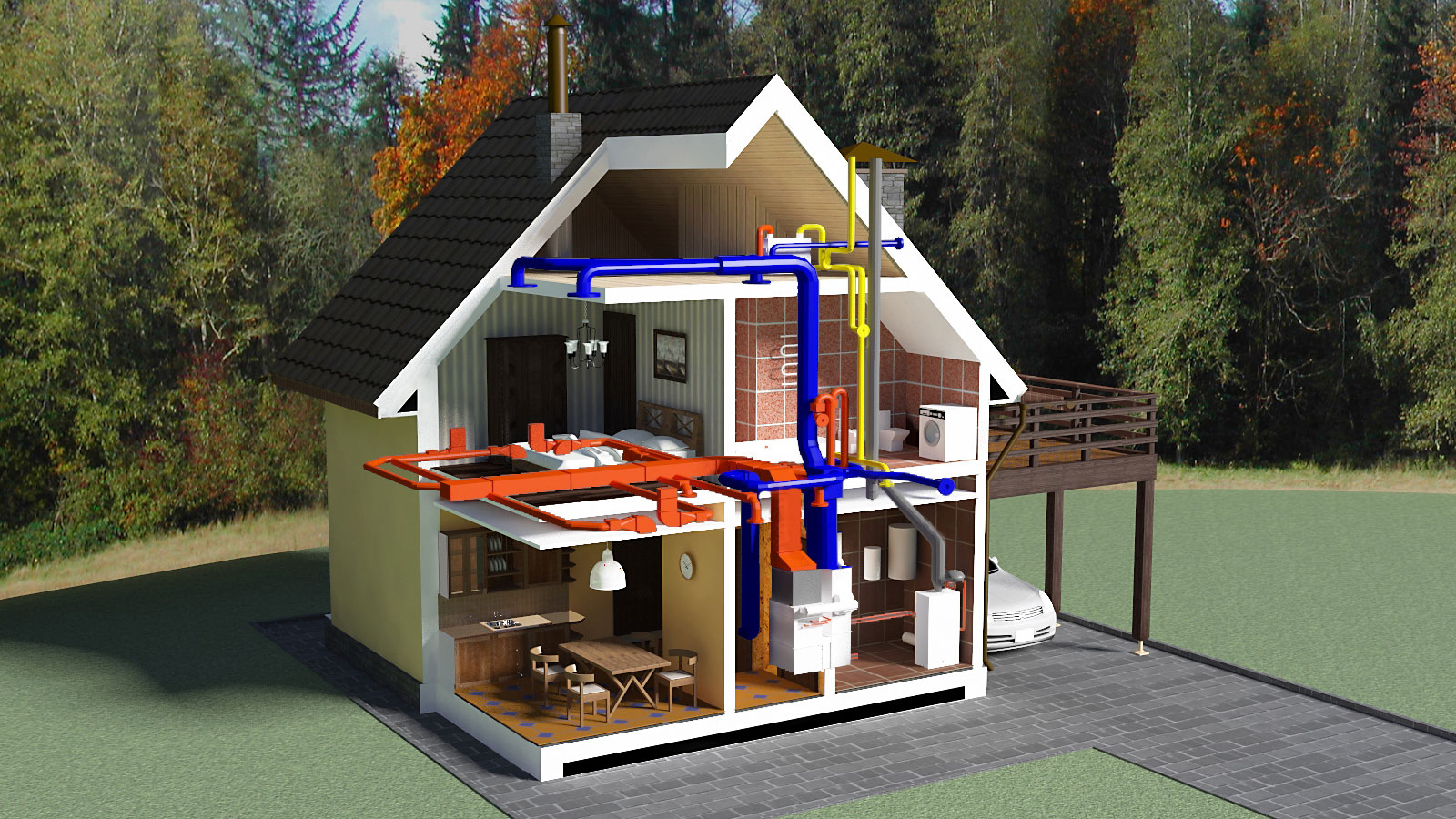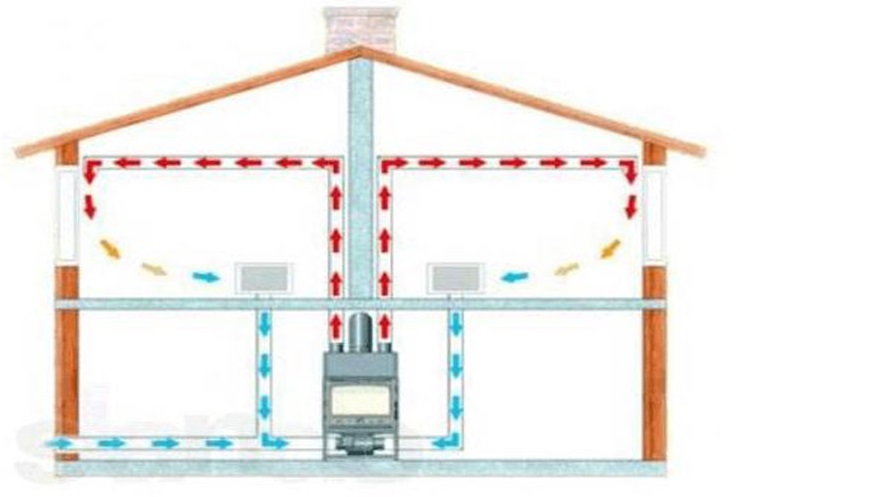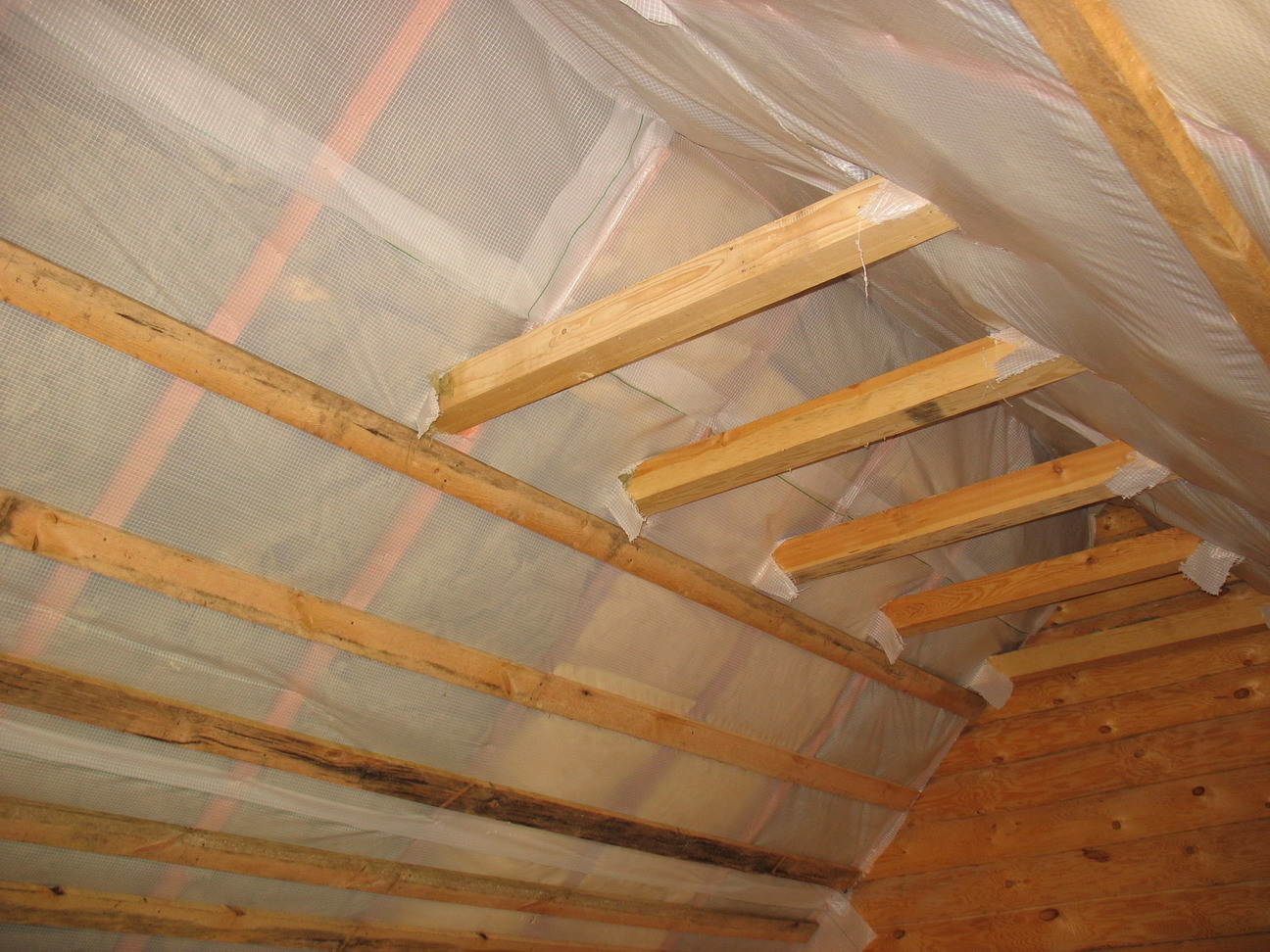Due to the fact that external insulation with the help of a sheet heat insulator is easy to carry out on their own, the owners actively use this method. Among the large number of heaters, expanded polystyrene is considered the most optimal option. When choosing foam for the walls of the house, one should take into account not only the positive, but also the negative qualities of the material.
- Advantages and disadvantages of foam
- Choosing the best foam
- Thickness calculation
- Preparation of external walls for insulation
- Step-by-step instructions for wall insulation outside with foam
- Warming process
- Insulation of corners
- Insulation of window, doorways and walls next to them
- Installation of fixing umbrellas on polystyrene
- Insulation reinforcement
Advantages and disadvantages of foam
- the process of warming is not difficult, and can be performed independently;
- relatively low consumption;
- no additional vapor barrier is required;
- long period of operation;
- low thermal conductivity;
- insignificant weight;
- affordable cost;
- not susceptible to microorganisms.
There were also some drawbacks:
- readily flammable with the release of toxic fumes;
- indifference of rodents to polystyrene.
It must be remembered that the facade foam plastic differs in types, thickness and density.
Choosing the best foam
- The size of the slabs. Manufacturers offer three main standard sizes of heat insulators: 1 * 1, 0.5 * 1, 1 * 2 meters. Considering that the material is easy to cut, this does not pose any particular problems. The choice is made based on the surface area to be insulated. Foam plates 0.5 * 1 meter are suitable for loggias and exterior walls of apartment buildings. For private houses with a flat wall surface, 1 * 1 meter slabs are used.
- Density. When carrying out thermal insulation, materials of various densities are used, which depends on the place of insulation and the goals pursued. For external walls, it is recommended to take polystyrene with a density of 25 kg / m3. Lower density material is used to insulate technical buildings, open balconies, verandas.
- Thick. The choice of thickness is influenced by a combination of individual factors: climatic conditions, material and wall thickness, and others.
- Quality. Having decided on the rest of the parameters, it is necessary to assess the quality of the foam intended for insulation of the facade. To do this, it is advisable to familiarize yourself with the quality certificate, which indicates the grade of the material, the date of its manufacture and other parameters.
Particular attention should be paid to the size and position of the granules, as well as the presence of voids. If the granules fall off without additional effort, it is difficult to call the material high-quality.
Thickness calculation
The thickness of the insulation is affected by the thermal resistance (R), the value of which is constant, and is the ratio of the temperature difference to the heat flux passing through the insulation. The higher the R value, the higher the quality of the material. If a brick wall with a thermal conductivity of 0.86 W has a thickness of 0.5 meters, then dividing 0.5 m by 0.86 W, we get the indicator R.
Attention! Having determined the required thickness, it is necessary to calculate the amount of foam for house insulation. This will save you from unnecessary expenses.
Preparation of external walls for insulation
All finishing and thermal insulation works are carried out after surface preparation, which should be cleaned, smoothed and primed. This is a rather lengthy process, but the result is worth it. First of all, the walls must be tapped in order to detect the falling off fragments. For an even fit of the foam, the protruding areas are knocked down. It is better to treat greasy stains with a solvent, and scratch the painted walls, which will improve adhesion.
Step-by-step instructions for wall insulation outside with foam
The first stage of the work will be the marking of the walls. Given that the angles may have some deviations, it is not worth equalizing them. It is better to use the old-fashioned method using a plumb line or a lighthouse. To do this, a rope with a load is tied at a distance of 5-6 mm from the wall, and fixed. Cross markings are carried out using twine and water level.
In order for the plates to be supported, a metal profile is fixed along the horizontal markings, the width of which should be equal to the thickness of the foam. The corners must be joined using corner joints or by means of an oblique cut. Fastening is done after 30-35 cm with 6 mm dowels. In addition to support, the profile also protects the thermal insulation from rodents.
Having prepared the glue for installation on the facade of foam plates, one of the methods of applying it to the sheets is used:
- if the walls are uneven, a large amount of glue is applied around the perimeter and in the center of the panel;
- with even walls, the glue is spread with a notched trowel evenly with a thin layer on the entire surface of the sheet;
- • you can use a special adhesive designed for foam plastic, spreading it along the center and perimeter of the board.
Attention! Remember that the technology of wall insulation with foam from the outside involves working with a dry surface. When pasting damp walls that have not dried out after winter, a fragile joint is created, due to which the thermal insulation deteriorates.
Warming process
Gluing is done after a day from the moment of priming. Styrofoam wall cladding starts at the bottom corner, long edge down. The laying of the second row is carried out with a slight offset, reminiscent of the bandaging of brickwork. The most convenient for insulating the facades of cottages with foam is the use of sheets 5 cm thick and 0.5 * 1 meter in size.
Insulation of corners
When performing thermal insulation of the corners of the house, the foam is connected by "bandaging". To prevent the formation of long vertical seams leading to cracking, the insulation should go over the adjacent wall. At the corners, as well as the slopes, the foam is glued with a margin that allows you to make a dressing. Excess slabs are cut off after the glue has dried using a wide knife or small hacksaw.
Insulation of window, doorways and walls next to them
Carrying out the insulation of the slopes, the sheets of insulation are laid end-to-end to the openings. In this case, an adjoining profile or a polyurethane sealing strip is used.The tape is glued directly to the door frame. When the seal is applied, it shrinks, decreasing by a third. When insulating a window located on the facade, the heat insulator is put on the frame, previously pasted over with polyurethane tape.
Installation of fixing umbrellas on polystyrene
Dowels are fixed in the center of the slab and in the corners. For each square meter, at least 6 fasteners are consumed. More will be needed near door and window slopes, along the plinth and at the corners.
Attention! The use of dowels containing metal rods is fraught with the formation of cold bridges.
Insulation reinforcement
To strengthen the slopes, decorative elements and corners of the building, special perforated corners made of aluminum or plastic are used. To secure them, they are greased with glue along with the adjacent mesh, and pressed against the insulation with a spatula. Smooth glue that has emerged through the perforation and mesh.
Each subsequent strip of mesh should overlap the previous one by 10 centimeters. After reinforcing the thermal insulation, the walls are re-covered with an adhesive solution, no more than 2 mm thick. Considering that the adhesive dries quickly, after a day you can start filling up the irregularities with putty.
This method of thermal insulation requires the use of appropriate materials. In the work, it is necessary to use not tile glue, but special for foam. This will allow you to get the desired result, and the walls finished with insulation will last a long time.

